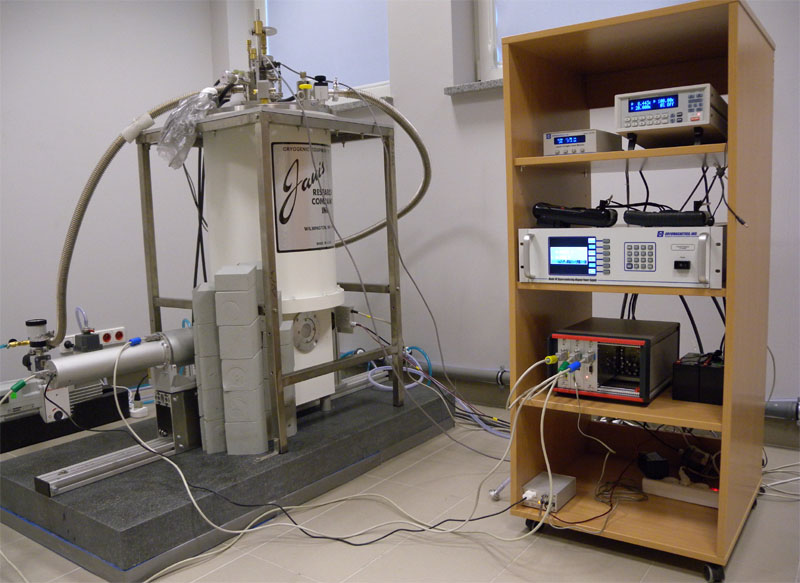Research
Division of Astronomy and Mt. Suhora Astronomical Observatory
Our group specializes in research on variable stars. We do also study eclipsing binary systems as well as extragalactic sources.

Our group specializes in research on variable stars. We do also study eclipsing binary systems as well as extragalactic sources.


Division of Experimental Physics
Mössbauer Spectroscopy Laboratory 57Fe Mössbauer spectroscopy is a nondestructive experimental nuclear method with broad diagnostic potential and applications in solid state physics, chemistry, material science, geology and any investigations of materials containing iron. It allows precise analysis of phase composition, local electronic (oxidation) states, structural (electric field gradient) and magnetic (spin) properties of solid state samples. Our Laboratory is equipped with: 1) two highest precision Mössbauer spectrometers MsAa-3/4, 2) two cryostats with temperature range 1.5 – 325 K and one of them with the superconducting magnet with the field ranging till 7.5 Tesla, 3) data processing software suite MOSGRAF with the unique applications fitting spectra by means of the extended transmission integral and the full Hamiltonian diagonalization.
Mössbauer Spectroscopy Laboratory 57Fe Mössbauer spectroscopy is a nondestructive experimental nuclear method with broad diagnostic potential and applications in solid state physics, chemistry, material science, geology and any investigations of materials containing iron. It allows precise analysis of phase composition, local electronic (oxidation) states, structural (electric field gradient) and magnetic (spin) properties of solid state samples. Our Laboratory is equipped with: 1) two highest precision Mössbauer spectrometers MsAa-3/4, 2) two cryostats with temperature range 1.5 – 325 K and one of them with the superconducting magnet with the field ranging till 7.5 Tesla, 3) data processing software suite MOSGRAF with the unique applications fitting spectra by means of the extended transmission integral and the full Hamiltonian diagonalization.
Division of Theoretical Physics and Didactics of Physics
Our group specializes in theoretical description of magnetic and electronic properties of compounds containing 3d/4f/5f, like Fe, Ce, Yb, uranium atoms, including these exhibiting heavy-fermion phenomena and strong electron correlations. We have explained properties of, for instance, FeBr2, LaCoO3, YbRh2Si2, ErNi5, EuTiO3, SrMnO3, UGa2, UPd2Al3 correlating macroscopic properties with atomic-scale properties. A hallmark of our theoretical approach is developed by Prof. R.J. Radwanski Quantum Atomistic Solid-State Theory (QUASST).
Our group specializes in theoretical description of magnetic and electronic properties of compounds containing 3d/4f/5f, like Fe, Ce, Yb, uranium atoms, including these exhibiting heavy-fermion phenomena and strong electron correlations. We have explained properties of, for instance, FeBr2, LaCoO3, YbRh2Si2, ErNi5, EuTiO3, SrMnO3, UGa2, UPd2Al3 correlating macroscopic properties with atomic-scale properties. A hallmark of our theoretical approach is developed by Prof. R.J. Radwanski Quantum Atomistic Solid-State Theory (QUASST).
